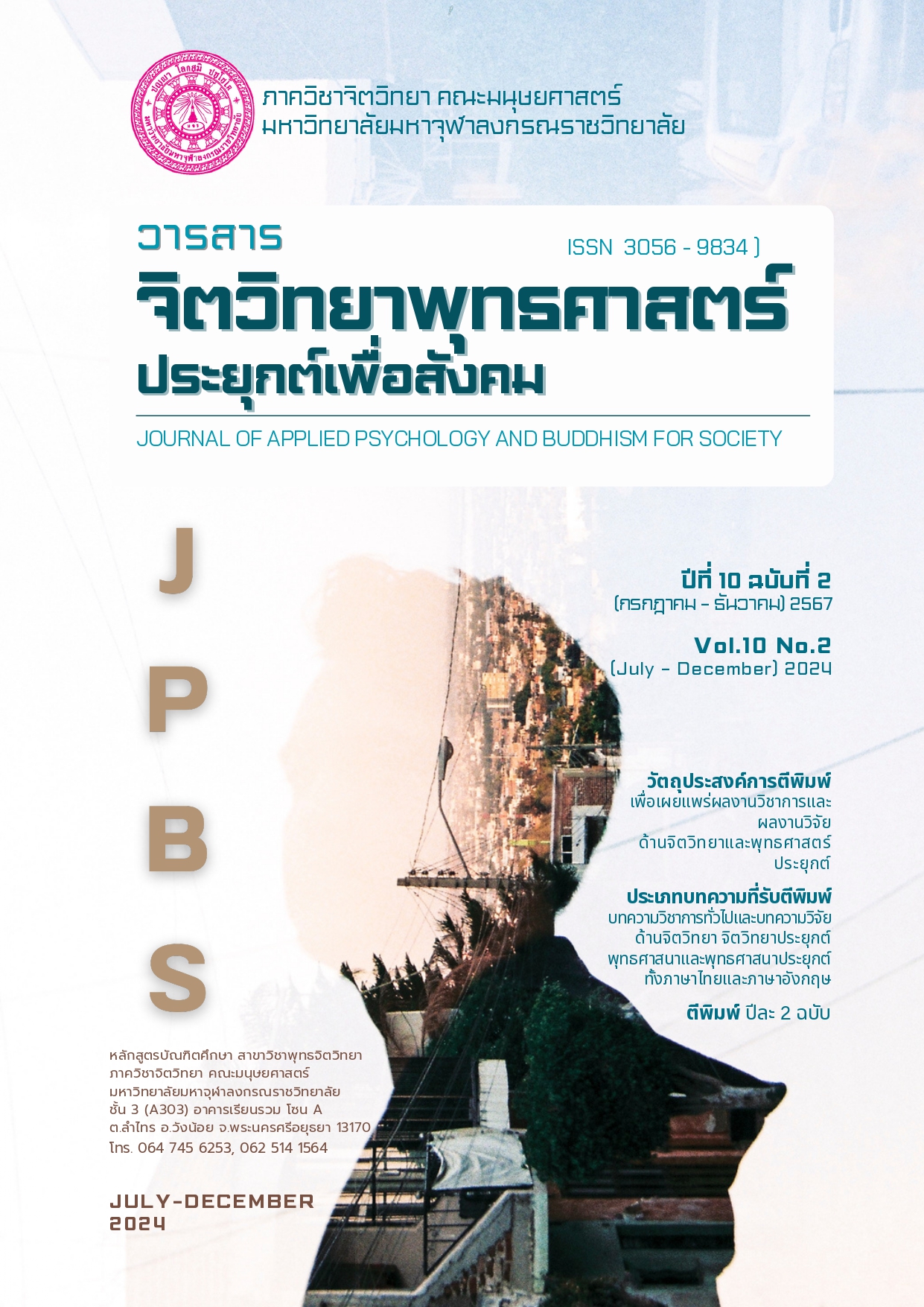Threefold Training (Tri-sikkha) and Instructional Management in the Digital Age
Keywords:
Teaching and Learning Management, Threefold Training (Tri-Sikkha), Digital Era, Learning Quality DevelopmentAbstract
The application of the Threefold Training (Tri-Sikkha) principles to digital-era teaching and learning is essential in enhancing both academic achievement and moral development of learners. Enthusiastic educators who can adapt to new knowledge are able to effectively guide and manage the classroom. The use of digital technologies and various teaching activities fosters deeper, meaningful learning for students. Behavioral changes in learners arise from effective learning experiences, which serve as indicators of success in teaching processes that promote essential skills and attributes for life and work in the digital age.
In Buddhism, Tri-Sikkha refers to the principles of training the body, speech, mind, and wisdom to achieve greater perfection. These principles play a significant role in fostering moral development and wisdom in individuals who apply them. Integrating the Threefold Training into teaching can effectively cultivate virtues and intellect in learners, providing a solid foundation for their future lives and contributing to a socially responsible mindset in the digital age
References
กิติมา ปรีดีดิลก. (2532). การบริหารและการนิเทศการศึกษาเบื้องต้น. กรุงเทพฯ : อักษรพิพัฒน์.
ชนสิทธิ์ สิทธิ์สูงเนิน. (2560). ห้องเรียนกลับด้าน : ทักษะการเรียนรู้ในศตวรรษที่ 21. วารสาร มจร สังคมศาสตร์ปริทรรศน์. 6(2),(ฉบับพิเศษ), 171-182.
ทิศนา แขมมณี. (2545). รูปแบบการเรียนการสอนทางเลือกที่หลากหลาย. กรุงเทพฯ : ด่านสุทธาการพิมพ์.
ประสิทธิ์ องอาจตระกูล. (2559). การเรียนรู้ในโลกยุค Digital. สืบค้น 25 กันยายน 2567, จาก https://url.in.th/mSSft
พงษ์พัชรินทร์ พุธวัฒนะ. (2564). การจัดการเรียนรู้เพื่อพัฒนาผู้เรียนในยุคดิจิทัล. วารสารนวัตกรรมการเรียนรู้และเทคโนโลยี, 1(2), 1-11.
พระเทพญาณมงคล และคณะ. (2558). คู่มือการศึกษาสัมมาปฏิบัติไตรสิกขา. นครปฐม : เพชรเกษม พริ้นติ้งกรุ๊ป.
พระพรหมคุณาภรณ์ (ป.อ.ปยุตฺโต). (2551). พจนานุกรมพุทธศาสน์ ฉบับประมวลศัพท์ (พิมพ์ครั้งที่ 11). กรุงเทพฯ : สานักพิมพ์จันทร์เพ็ญ.
มหาวิทยาลัยมหาจุฬาลงกรณราชวิทยาลัย. (2539). พระไตรปิฎกภาษาไทย ฉบับมหาจุฬาลงกรณราชวิทยาลัย. กรุงเทพฯ : โรงพิมพ์มหาจุฬาลงกรณราชวิทยาลัย.
วิจารณ์ พานิช. (2555). วิธีการเรียนรู้เพื่อศิษย์ในศตวรรษที่ 21. กรุงเทพฯ : มูลนิธิสดศรี–สฤษดิ์วงศ์.
วิชัย วงศ์ใหญ่ และ มารุต พัฒผล. (2563). การออกแบบการเรียนรู้ใน New Normal. กรุงเทพฯ : มหาวิทยาลัยศรีนครินทรวิโรฒ.
วันเพ็ญ พุทธานนท์. (2563). New Normal การศึกษาไทยกับ 4 รูปแบบใหม่การเรียนรู้. สืบค้น 25 กันยายน 2567, จาก https://www.thebangkokinsight.com/367124/
สุคนธ์ ภูริเวทย์. (2544). การออกแบบการสอน Instructional design. กรุงเทพฯ : มหาวิทยาลัยรามคําแหง.
สำนักงานเลขาธิการสภาการศึกษา. (2563). แนวทางการพัฒนาแหล่งการเรียนรู้ในยุคดิจิทัลที่เหมาะสมกับผู้เรียนในวัยเรียน. นนทบุรี : บริษัท 21 เซ็นจูรี่ จำกัด.
Thompson, J. (2016). 6 Blended Learning Models: When Blended Learning Is What’s Up for Successful Students. Retrieved September 23, 2019, from https://elearningindustry.com/6-blended-learning-models-blended-learning-successful-students
OKMD. (2563). การเรียนรู้ในยุคดิจิทัล. สืบค้น 25 กันยายน 2567, จาก https://www.okmd.or.th/okmd-opportunity/life-long-learning/3678/
“_______”. (2563). การเรียนรู้ในยุคดิจิทัล (2) : เทคโนโลยีกับการเรียนรู้. สืบค้น 25 กันยายน 2567, จาก https://www.okmd.or.th/okmd-opportunity/life-long-learning/3686/
Utecht, J. & Keller, D. (2019). Becoming Relevant Again: Applying Connectivism Learning Theory to Today's Classrooms. Critical Questions in Education. 10(2), 107-119.
Downloads
Published
How to Cite
Issue
Section
Categories
License
Copyright (c) 2024 Journal of Applied Psychology and Buddhism for Society

This work is licensed under a Creative Commons Attribution-NonCommercial-NoDerivatives 4.0 International License.





